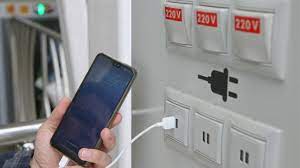Last fall I wrote that after six months of experimenting with the iPad, my conclusion was that it was primarily good for just two things — reading and Scrabble. But, in order to be fair and to make room for some of the other possibilities, I officially noted the two-fer as:
- Reading and viewing
- Multi-touch interaction
So, basically, reading and games. (Read the article The truth about iPad: It’s only good for two things for the full explanation.)
Well, in the second six months of using the iPad — leading up to the release of the iPad 2 earlier this year — I discovered a third use for the iPad. And, this one thing has unlocked a lot more value in using the iPad as a business tool.
The third use? Note taking.
As it turns out, the iPad makes a terrific notebook — in the traditional sense. For me , the iPad has completely replaced the need for a pen and a pad of paper in meetings. I now take all my notes electronically with the iPad and can quickly and easily do several different things with the notes afterward:
- Turn the action items into tasks or calendar items
- Sync the notes to a laptop or smartphone for later review
- Edit the notes into a recap to send to colleagues
The value of no longer having a bunch of notepads and loose slips of paper is obvious. And, the advantage of immediately having all of these these notes in electronic format — instead of having to convert some of them to electronic formats later — is easy to see. But, there are also a couple other factors that make it better to use an iPad for note taking.
First, while I could easily do the same type of note taking with a laptop or a netbook, there’s something a lot friendlier about doing it with a tablet. If you’re in a conference room or a 1-on-1 meeting and you flip open a laptop to take notes then you close yourself off from the other person(s) in the room. With a tablet, I can just flip open the tablet, lay it flat on the tablet, take my notes, and then flip it closed again. It feels about the same as taking paper notes while talking to someone in a meeting.
I could also accomplish this kind of note taking with a smartphone — and I occasionally do when I don’t have a tablet with me — but because of the larger display and larger on-screen keyboard, typing notes on a tablet is faster and usually has fewer typos. The tablet also allows you to thumb-type when holding the tablet in portrait mode or to put it in landscape mode and type like you would on a computer.
The other factor that can make this scenario better than either old style paper note taking or PC word processing is the cloud. Using apps and services like Evernote and Dropbox (with the help of iA Writer), you can take notes on your iPad and have them immediately sync back to your PC or Mac so that they’re ready for you to work on when you get back to your desk. The challenge with this, obviously, is security. You wouldn’t want to save sensitive company information on public services like Evernote or Dropbox. For sensitive information, I’d recommend using a program you can sync locally like Apple’s Pages word processor or the iPad’s built-in Notes app. Another option is to use the Mail app to take your notes in a mail message and then email it to yourself when the meeting is over.
However you prefer do it, note taking is now one of the leading business functions of the iPad. It’s one of the reasons why the iPad has become a preferred tool for many people who spend a large chunk of their time in meetings, especially executives, project managers, and sales people.


No comments:
Post a Comment